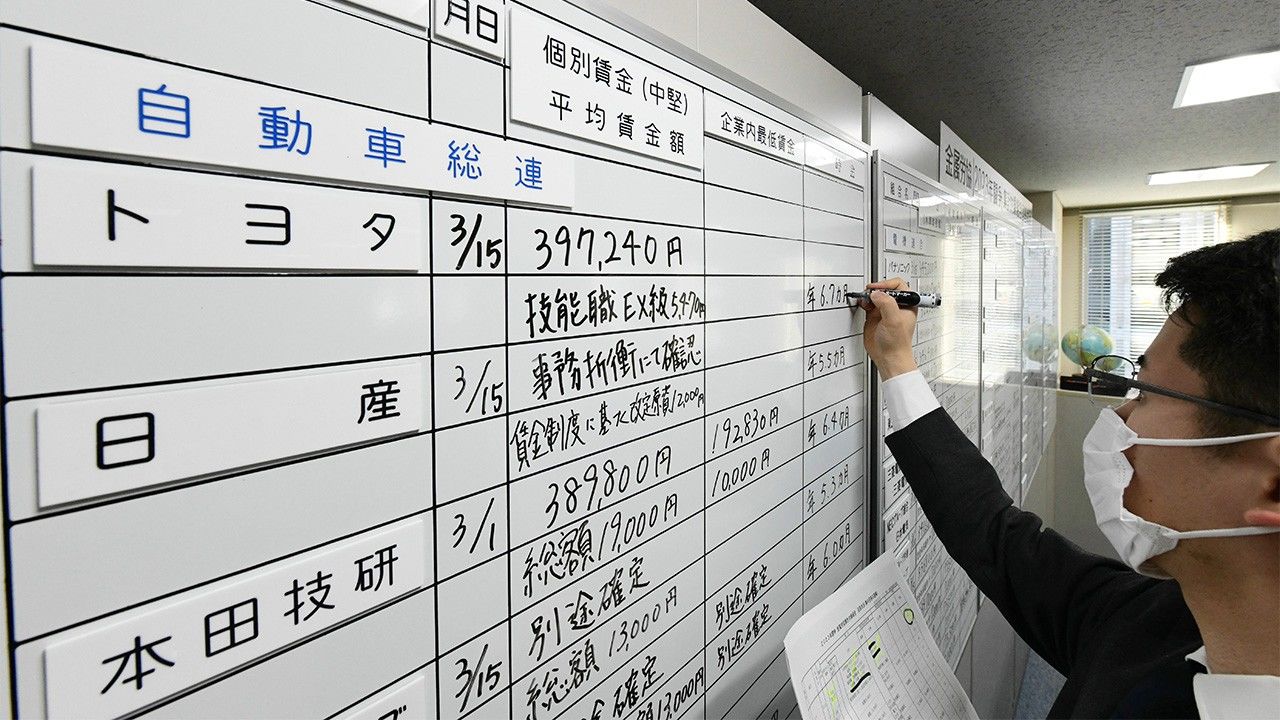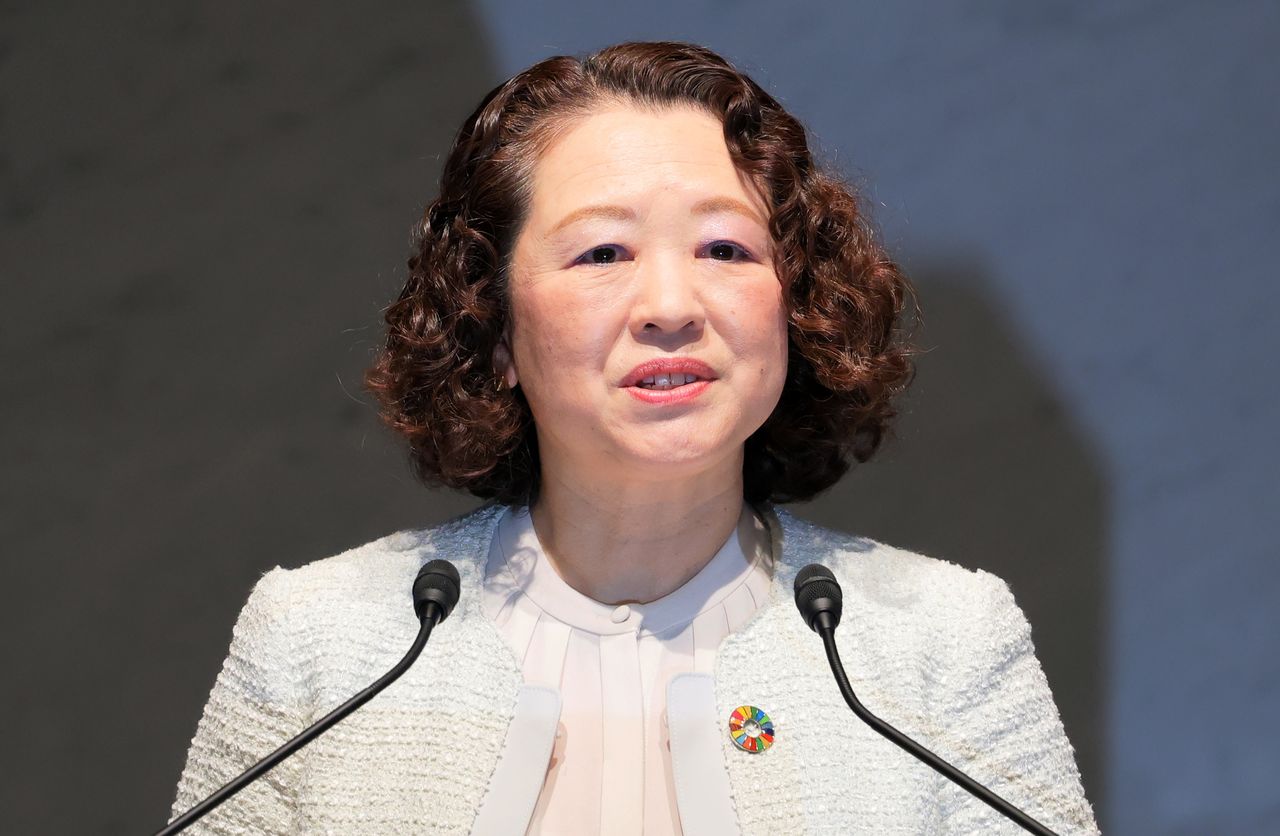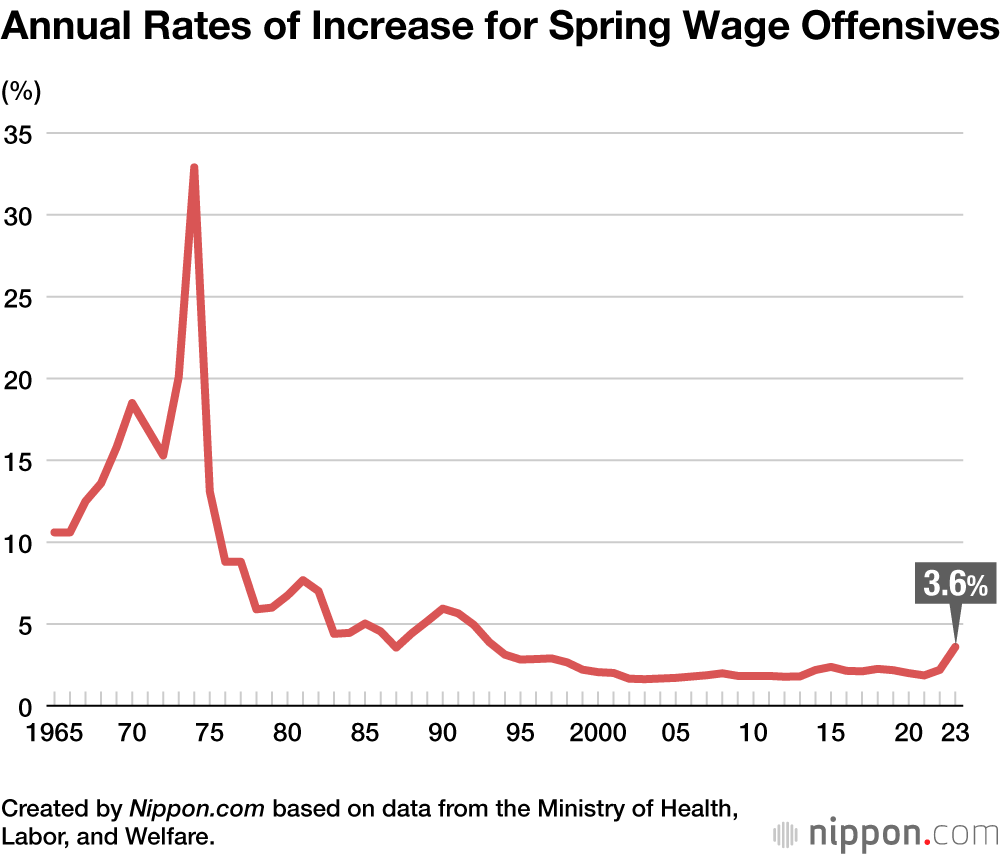
“Shuntō”: What Is Japan’s Spring Wage Offensive?
Economy Work- English
- 日本語
- 简体字
- 繁體字
- Français
- Español
- العربية
- Русский
Japan’s shuntō, known in English as the “spring wage offensive,” consists of labor unions engaging in collective bargaining with company management regarding wage increases and other improvements to compensation. Its history dates back to 1955. Each spring the labor unions of individual companies present specific demands to management and engage in collective bargaining. These demands are based on an outline of demands coordinated and drafted by the Japanese Trade Union Confederation (Rengō), the central organization of labor unions, or by industrial labor unions.
As Rengō’s website explains, since many Japanese companies have accounting years that extend from April 1 to March 31 of the following year, labor unions negotiate in February and March wage increases and other labor conditions for the coming fiscal year. Rengō positions these negotiations as the largest battle of the year for labor unions and call them the shuntō.

President Yoshino Tomoko of the Japanese Trade Union Confederation (Rengō) giving a speech at a labor-management forum on January 24, 2024, at Chiyoda , Tokyo. (© Jiji)
Spring wage offensives are said to have begun in 1955 when eight industry organizations including the railroad, coal mining, and electrical machinery sectors joined together to negotiate the same demands during the same spring period. These organizations thought that labor unions working together would strengthen their bargaining power with management. Ōta Kaoru, who served as the chairperson of the General Council of Trade Unions of Japan (Sōhyō), one of the predecessor organizations of Rengō that was dissolved in 1989 with Rengō’s founding, proposed and established the spring wage offensive system. He stated that while one might feel anxious walking down a dark street alone at night, there can be peace of mind if everyone holds hands and walks together.
The focus of the spring wage offensive each year is the increase of wages, which consists of a base pay component (base-up) and an annual wage increase component. With the increase of basic salary, the level of base pay is raised across the board, resulting in a higher overall wage structure. The increase of base pay will mean higher labor costs for companies. Meanwhile, the annual wage increase is an increase of base pay according to an employee’s age or seniority. The annual wage increase does not change the overall level of base pay. It is the base pay component that is closely watched when prices are rising.
For the spring wage offensive of 2024, Rengō is demanding an increase of “3% or more” for base pay and a combined increase of “5% or more” with the annual wage increase. In view of the negative growth of real wages owing to a historically high rate of inflation, Rengō has strengthened its demand from a wage increase rate of “around 5%” that it made during the spring wage offensive of 2023.
(Translated from Japanese. Banner photo: A member of the Japan Council of Metalworkers’ Unions writing on a white board replies to labor-management negotiations related to the spring wage offensive of 2023, on March 15, 2023, in Chūō, Tokyo. © Jiji.)
